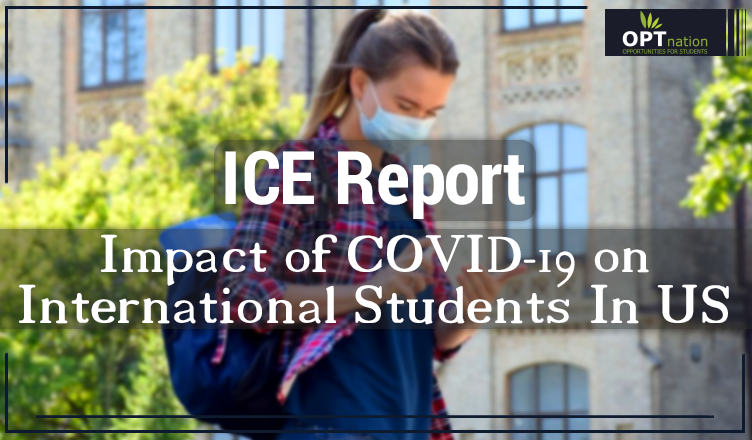What began as a small-scale viral spread, soon became a pandemic blown all around the world. Various sectors were affected. Many countries started heavily working on a strict lockdown throughout their boundaries even restricting all sorts of movements especially air traffic to minimize the spread of the virus.
The most affected of this is the international students. There has been a great decrease in the year 2020 in the intake of such students. SEVP, a department of ICE, has studied and collected data to present a report on how much it has affected the student’s intake in various universities.
Read further to get an idea of how much this pandemic has wrecked the plans of many international students.
ICE report on international students in US details impact of COVID
The Student and Exchange Visitor Program (SEVP), part of U.S. Immigration and Customs Enforcement (ICE), released its annual report detailing the international student population, which in 2020 reflected the impact of the global pandemic.
The report highlights calendar year 2020 data from the Student and Exchange Visitor Information System (SEVIS), a web-based system that includes information about international students, exchange visitors and their dependents while they are in the United States.
The report notes that there were 1.25 million active records in SEVIS for F-1 and M-1 students during calendar year 2020, a 17.86% decrease from calendar year 2019.
U.S. schools saw a 72% decrease in new international student enrollment in 2020 compared to 2019. New international students include those who were not enrolled in a program of study at a U.S. school during the previous calendar year.
In January 2020, new international student enrollment at U.S. schools was on par with January 2019 enrollment for both F international students (those pursuing academic degree programs) and M international students (those pursuing vocational degree programs).
However, U.S. schools saw dramatic decreases in new international student enrollment in both August and September, traditionally months where the largest numbers of new international students enroll in U.S. schools. In Aug. 2020, there was a 91% decrease in new F-1 international student enrollment and a 72% decrease in new M-1 international student enrollment at U.S. schools.
The number of international students enrolled in K-12 programs of study decreased 24.6% from 2019 to 2020. In 2019, more than three K-12 schools enrolled more than 700 international students, with one school hosting more than 1,000 international students. In comparison, in 2020, only one school hosted more than 700 international students.
While all four regions in the U.S. saw a decline in international student records from 2019 to 2020, the Northeast, which was an early epicenter for COVID-19, saw the greatest decrease at 19.4%. California continued to host more international students than any other state.
International students who obtained an Employment Authorization Document (EAD) to participate in the Optional Practical Training (OPT) program, decreased by 12% from 2019 to 2020.
Four SEVP-certified schools each enrolled more than 15,000 international students: Northeastern University, New York University, Columbia University in the City of New York and the University of Southern California.
The number of SEVP-certified schools eligible to enroll international students decreased by 280 schools from 2019 to 2020.
All continents saw an overall decline in the number of students coming to the United States in 2020. International F-1 and M-1 students came from every continent in the world other than Antarctica, and from more than 220 countries and territories. Students from China and India made Asia the most popular continent of origin, accounting for 74% of the international student population, but both countries saw fewer students in 2020 than the previous year.
The full SEVIS by the numbers report can be viewed online, and additional SEVIS data can also be viewed in the SEVP Data Library.
ICE reviews SEVIS records for potential violations and refers cases with possible national security or public safety concerns to its field offices for further investigation. Additionally, SEVP’s Analysis and Operations Center analyzes student and school records for administrative compliance with federal regulations related to studying in the United States.
WRAPPING UP
Throughout the various nations have seen a decline in the number of students who applied for study programs in the USA. With the pandemic going high in the entire of 2020, this situation persisted all over the various universities in the USA.
With vaccines out, we look forward to a situation that stabilizes most of the cases all over the world. Meanwhile, we forge ahead with our situation to make the best out of it. This situation won’t last forever. If you are a student looking for higher studiice.gov/news/releases/ice-report-international-students-us-es in the USA, keep an eye out and do your best.
Source: ICE

